All about Benjamin's Natasha ficuses
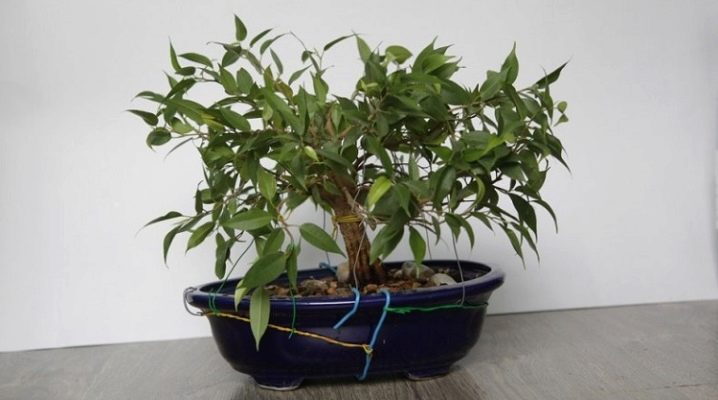
When choosing an ornamental plant, most flower growers opt for attractive and unpretentious ficuses. In this regard, the popularity of the decorative ficus Benjamin, which is called a beautiful Russian name - "Natasha", is growing. For a long time, for the Slavs, this tree has been considered a symbol of prosperity, and the famous Taoist practice of feng shui predicts order in the financial sphere for the owners of the ficus. In addition, the leaves of the plant absorb various hazardous compounds in the air and purify it.
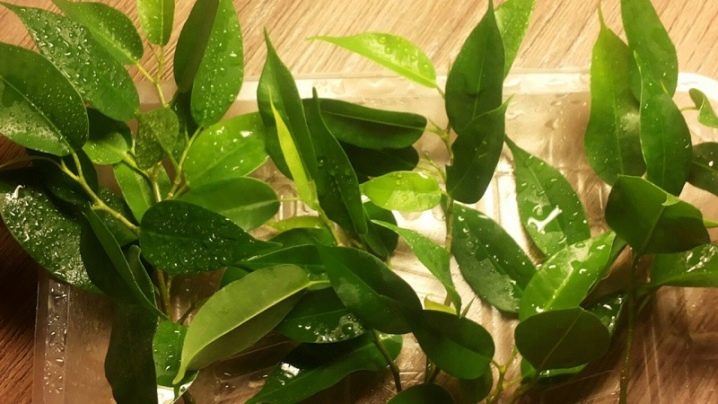
Peculiarities
The evergreen variety "Natasha" belongs to the mulberry family, belongs to the genus of ficus. It is a reduced view of the well-known ficus Benjamin. This mini bonsai grows up to 30–100 cm in height. Its lush crown is a lot of small smooth green leaves up to 3 cm long. The trunk of the tree is voluminous and rather strong, usually formed from several intertwined trunks of plants growing in one pot. Natasha has branchy thin shoots that need systematic pruning for the further formation of a spreading crown.
The ficus of this variety powerful root system, growing in depth and along the upper soil layers. The flowering of the plant occurs exclusively in the conditions of their natural growth.
At home, even skilled flower growers have not yet been able to achieve its flowering.
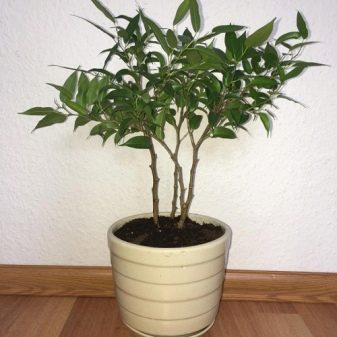
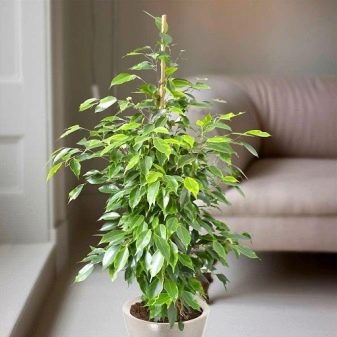
The homeland of this extraordinary plant is the tropics. The natural growing area is North and East Africa. These ficuses are also found in East Asia and Australia. Miniature trees prefer to inhabit the area at the foot of the mountains and the coast.
In temperate latitudes, such a ficus is also capable of growing, but is widely grown as an ornamental plant in apartment blocks. For beauty, it is wrapped in jute, willingly looked after and periodically propagated.
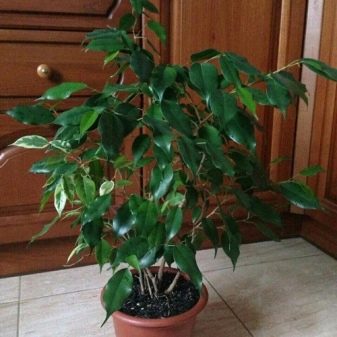
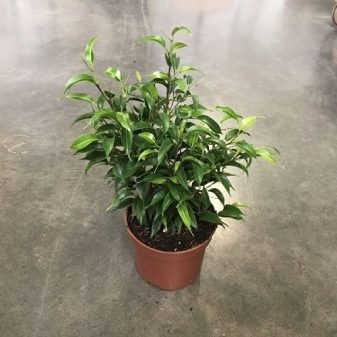
How to choose?
Inexperienced novice growers who want to buy Natasha ficus are worried about how not to make a mistake with the choice.
First of all, you need to pay attention to the trunk, which must not have any traces of damage or fresh cuts... Leaves on the branches of a healthy plant without stains and dried out areas, pests should not be seen on them. It is important to choose a pot of dry soil.
The appearance of the ficus without signs of lethargy indicates its health. When buying, this serves as a guarantee of the right choice.
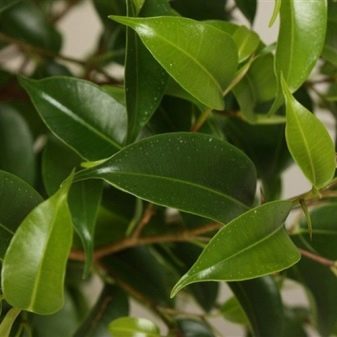
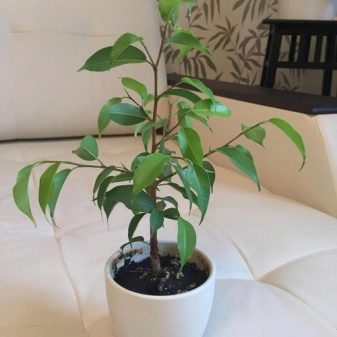
How to care?
Although miniature ficus is famous for its unpretentiousness, for a rapid rate of growth and development, it must be located in the right place and kept in a comfortable environment.
Home care implies and correct organization of lighting. Ficus is quite light-loving, as evidenced by its glossy leaves. To accommodate "Natasha" fit south-facing windows, well-lit window sill. A sufficient amount of sun will make it possible to form an even trunk. Lack of light often causes it to bend. But you need to remember that the sun's rays can severely burn the leaves, therefore the light of the sun should not be direct, but diffused.
The pot must be rotated periodically, providing the plant with uniform photosynthesis for its full development.

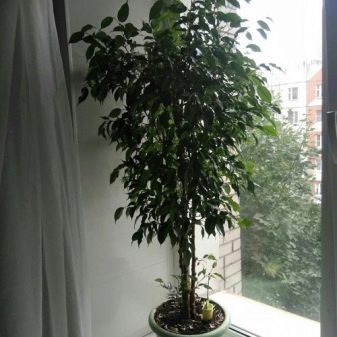
Air humidity and temperature
Being a tropical plant, this type of ficus is a lover of low humidity.He is not afraid of a short drought, but waterlogging will be destructive. Ideal conditions are to maintain moderate humidity by spraying the crown of the tree with a spray bottle or occasionally watering from the shower in the bathroom.
The temperature regime does not tolerate extremes. The optimal climate in a room for its normal development is 22-25 C. In winter, a lower temperature is allowed - up to 13 C.
In winter, the growth of bonsai slows down, so the reduced temperature this season will not be detrimental to Natasha.
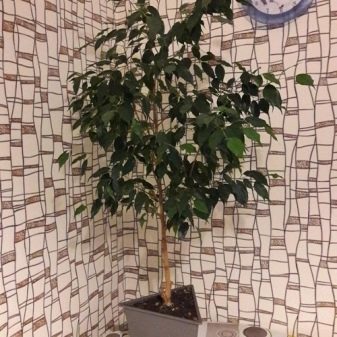
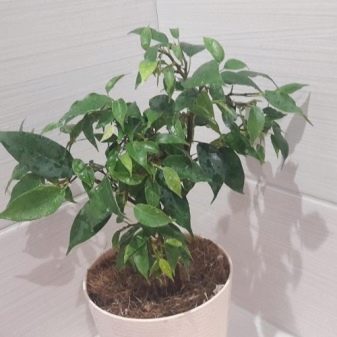
The soil
This ficus does not have too strict requirements for the composition of the soil mixture. It is comfortable to grow in mixed soil: 2 parts sod (leaf) - 1 part sand. You can find a ready-made mixture in garden or flower outlets, or planted in a universal soil designed for many decorative organic crops.

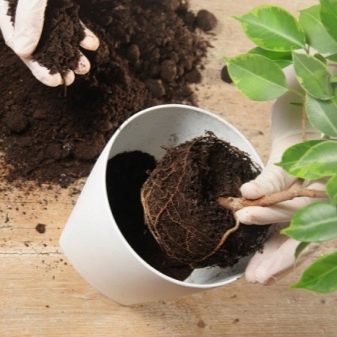
Transfer
A miniature plant is transplanted once a year or once every three years. The transplanting period is influenced by the initial volume of the pot and the rate of development of the decorative ficus. Young shoots are characterized by rapid development, therefore the transplant should be an annual procedure.
In mature ficuses, vegetation and development takes place at a slower pace, which entails the need for transplanting only once in a couple of years. Anyway it is desirable to renew the topsoil annually.
It is important to remember that ficus of this species does not tolerate temperature jumps and drafts.
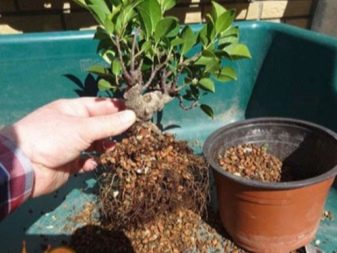
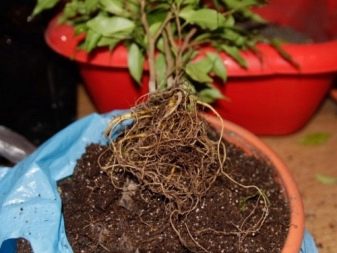
The transplant process involves the observance of several rules in a certain sequence.
- The transplant is carried out in the phase of rapid growth: in the spring or summer.
- In winter, it is not recommended to transplant ficus, since it is at rest, without the potential to master new volumes.
- The diameter of the prepared flowerpot should exceed the previous one by a couple of centimeters. This difference is dictated by the fact that in a too large container, the ficus will direct all its efforts to the development of roots, and in an overly tight container, development will go very slowly.
- On the eve of transplantation (1 day), the tree needs to be watered. This is done in order to preserve the integrity of the earthen coma during the upcoming transshipment.
- You need to transplant ficus with pre-prepared soil and a new pot. At the bottom, you need to lay drainage in the form of a layer of expanded clay. A slightly compacted soil layer is laid out on the drainage.
- It is important to extract the ficus from the old container without destroying the formed clod of earth. After that, the upper and then the lower soil layer are removed.
- Roots that are too long should be shortened slightly.
- A plant prepared in this way is placed in a new pot, and the existing voids are sprinkled with a fresh portion of soil and compacted.
- Then the soil will have to be watered not abundantly with water with the rooting agent diluted in it ("Gilea" or "Kornevin").
- When using store-bought soil, packed in PVC bags, it is not necessary to water the soil. The mixture already contains sufficient moisture.
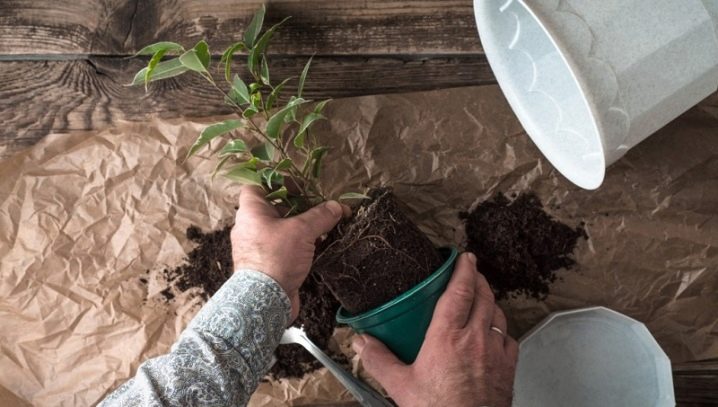
Top dressing
Ficus "Natasha" does not differ in rapid growth in indoor conditions. To support the plant and accelerate its development, special fertilizing in the form of fertilizers will help. To do this, you can use different water-soluble fertilizers, intended for the cultivation of ficuses and palm plants: "Rainbow", "Kemiroi", "Palm", "Humisol", etc.
Fertilizers are important during the period of rapid plant development - in the spring-summer season. Fertilize once every 1.5-2 weeks. The preparation of the solution is done according to the glued instructions, however, if the fertilizer is applied for the first time, a smaller dose is needed. This must be done in order to look at the reaction of the ficus.
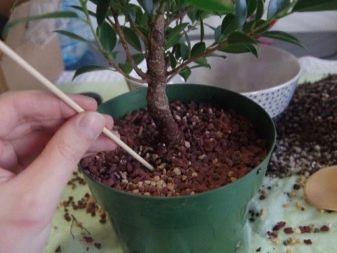
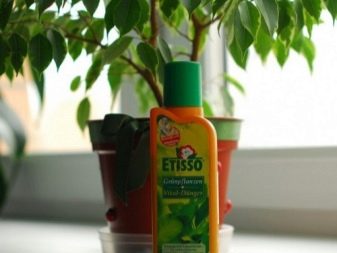
Watering
The primary requirement is to moisten the soil in moderation and on time. It is not easy to predict the exact time for re-watering. The rate at which a plant consumes moisture is influenced by factors such as the level of humidity and t in the atmosphere.
Watering is repeated only when a centimeter of the upper soil layer is completely dry. Water is used exceptionally settled and warm. The soil is watered abundantly, but after half an hour it is necessary to drain the excess liquid that has fallen into the pan of the pot.
For a plant of this type, it will be useful taking a warm shower as a one-time monthly procedure. It can be carried out in the bathroom, covering the ground, in order to avoid excessive waterlogging. This procedure will not only moisturize the ficus, but also wash away dust from the leaves, returning them an attractive glossy shine.
It is important to know that in people with sensitive skin and allergies, the milky juice of the Natasha ficus is capable of provoking severe allergic reactions.
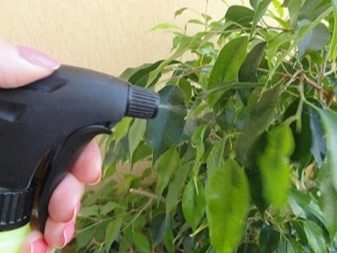
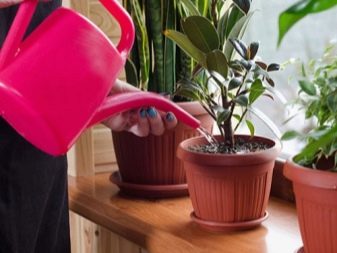
Fight disease
If the plant begins to lose its decorative appeal - the leaves turn yellow and fall - you need to think about the reasons for what is happening. Perhaps one of them - or even several - are mentioned below.
- Poor care.
- The presence of pests.
- Lack of daylight, in which it is necessary to move the ficus to a brighter place.
- Sunburn (requires moving the plant into the shade).
- Lack of watering (drying out tips), especially if the top of the soil is dry. Unfortunately, renewed irrigation will not be able to restore the original appearance of the foliage. Although it will certainly help prevent the appearance of new defects on the leaves in the future.
- Deformation of foliage and traces of wilting at an excessively low air temperature. Also, from a change in temperature and location of placement, the ficus sometimes drops foliage and shows primary signs of wilting. After acclimatization, all processes are restored.
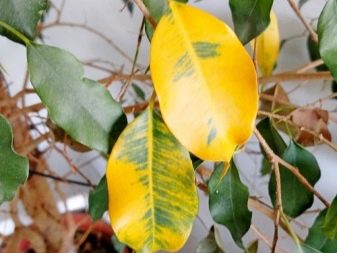
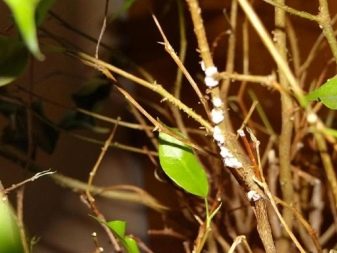
In the process of photosynthesis, Natasha leaves produce glucose. With a decrease in the growth rate of the plant, it is worth occasionally watering the soil with sweetened water, which is prepared at the rate of 10 grams of sugar per 0.25 liters of liquid.
In general, ficus of this variety is ill infrequently. Most often, root rot leads to death, which occurs as a result of frequent and abundant watering, provoking stagnation of moisture in the soil and subsequent rotting of the roots. You can recognize the problem by the appearance on the plant. The leaves begin to turn yellow, and then fall off.
Eliminate the disease only complete disposal of the root system from a waterlogged earthy coma.
All rotten parts of the roots must be cut off, and the tree must be placed in new soil in another pot.
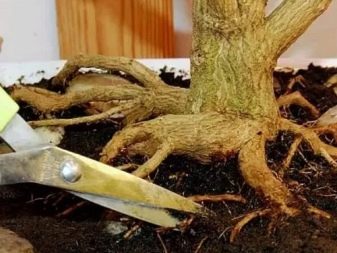
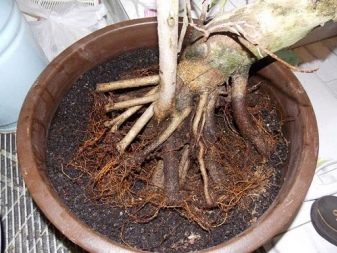
Of the pests that torment the tree, aphids, spider mites or mealybugs can be distinguished.
Aphids appear as a result of transplantation into infected land, due to the proximity to the infected plant or the location of the ficus in the open air in summer.
The worm and the tick suck the juices from the plant, dooming it to death.
Pests multiply in hot and dry weather, dry air in a stuffy room. You can fight them with a whole spectrum antiparasitic agents: "Akarin", "Fitoverm", "Karbofos", etc.... You can read how to use them on the packaging. After the treatment, the result is achieved immediately.

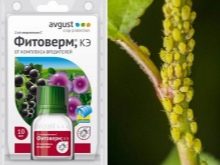

Pruning
Ficus Benjamin of this variety needs regular pruning. Carrying out such a procedure on time stimulates dormant buds for further vegetation, due to which a lush crown of a tree is formed. The lower fresh shoots growing on the trunk, branches with a minimum of side leaves and shoots, the uppermost young shoots of branches without branches on the sides, dying branches without leaves, broken branches are subjected to pruning.
The pruning procedure is carried out twice (three times) a year, as the ficus grows.
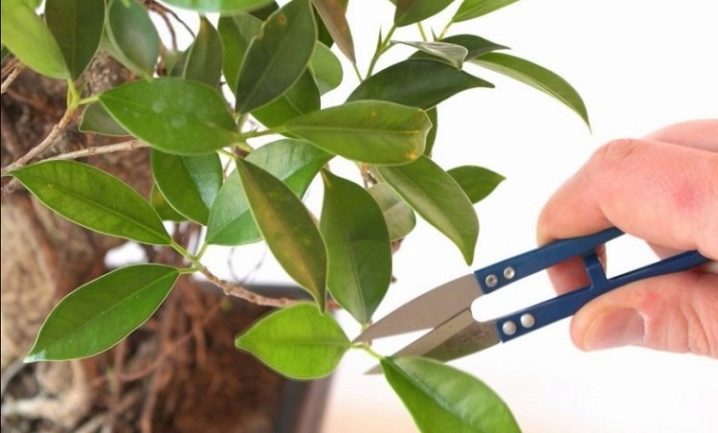
Reproduction
In the case of ficus, the most elementary breeding option is cuttings. It should be carried out in the spring and in the summer, combining cuttings and pruning to create a spreading crown. Fresh lateral shoots (10–12 cm) with a sufficiently developed trunk serve as cuttings.
After pruning, the prepared stalk is placed in a jar with a small amount of water. It is important that the formed milky juice dissolves in it, allowing the cut to take root. After the juice is released into it, the water must be changed to fresh.
After a couple of weeks, the stalk gives the first roots, predicting a quick planting in a previously prepared soil: a mixture of turf soil with sand in a 1: 1 ratio. After planting, the soil needs to be slightly moistened with the addition of any rooting agent to the water. To speed up the rooting process, you can create greenhouse conditions: put a spacious glass container on the handle. In greenhouse conditions, it is necessary to monitor the moderation of soil moisture.
Growing Benjamin's decorative ficus in the Natasha mini-version does not require any special skills, but in order to provide suitable conditions for growth, you must follow the recommendations given. This type of ficus is quite unpretentious, and if simple care manipulations are followed, it is guaranteed to please with active growth and a healthy look.
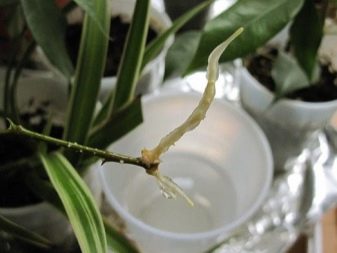
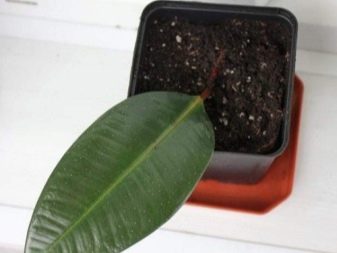
You can find out how to propagate Benjamin Natasha's ficus below.































The comment was sent successfully.